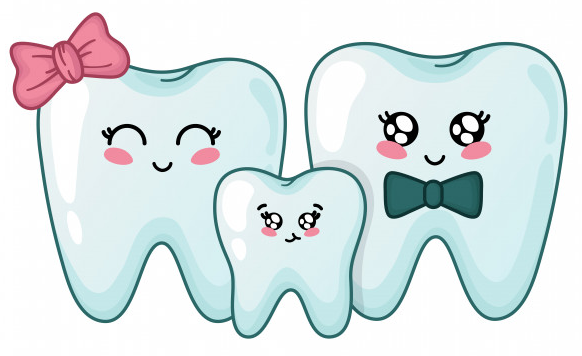
Your teeth do more than give you a sparkling smile. They chew food so you can eat it. The first teeth we get as babies are called milk teeth. Babies start developing teeth before they’re even born, but the teeth aren’t visible until the baby is 6-12 months old. Young children have 20 milk teeth. Milk teeth are usually replaced by adult teeth between the ages of 6 and 12. You have more permanent teeth than milk teeth: 32 in all. No two people have the same set of teeth. Your teeth are as unique as your fingerprint, so be proud of your unique set of teeth.
Wisdom Teeth
These are the last teeth to come in, total four. One in each corner of the mouth. Wisdom teeth can lead to problems if there isn’t enough space for them to surface or they come through in the wrong position. Hence, most wisdom teeth need to be removed before they erupt to prevent potential crowding problems.
Teeth Structure
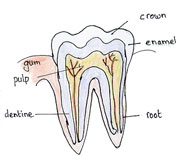
Teeth are made up of three layers of varying densities:
- Enamel is a hard protective outer layer covering the crown of the tooth.
- Dentine is a second protective layer covering the nerve of the tooth.
- Pulp is the soft middle of the tooth that has a blood supply and nerve endings.
All About Human Teeth
Teeth aren’t bones and can’t regrow. Teeth is white and contains calcium. It looks yellow when the white enamel is worn down , causing it to become translucent. Only two thirds of your teeth are visible. The rest is hidden inside your gum.
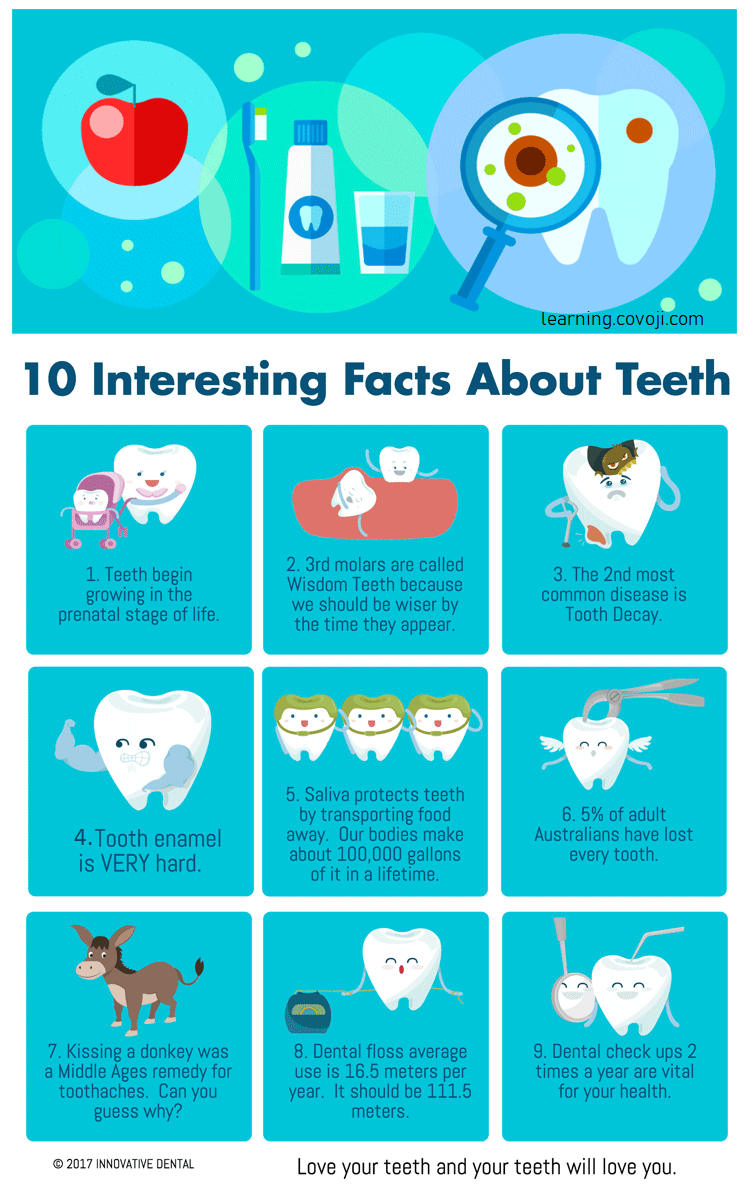
Fun Facts About Animal Teeth

- Sharks lose a lot of teeth. At least one tooth per week.
- Elephant tusks are actually a set of teeth that never stop growing!
- Mosquitoes actually have 47 teeth! They are so small that they cannot be seen without magnification.
- A horse’s teeth are massive and weigh more than its brain.
- Snails have over 25,000 microscopic teeth on their tongues!
Don’t forget to brush your teeth twice a day.
And also follow us on Facebook, Instagram, Twitter and Pinterest.

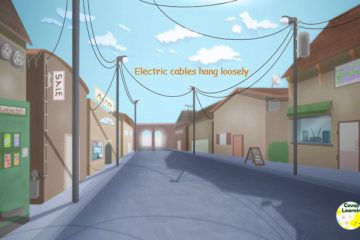
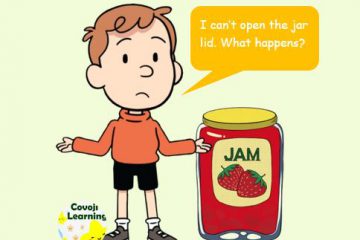
0 Comments